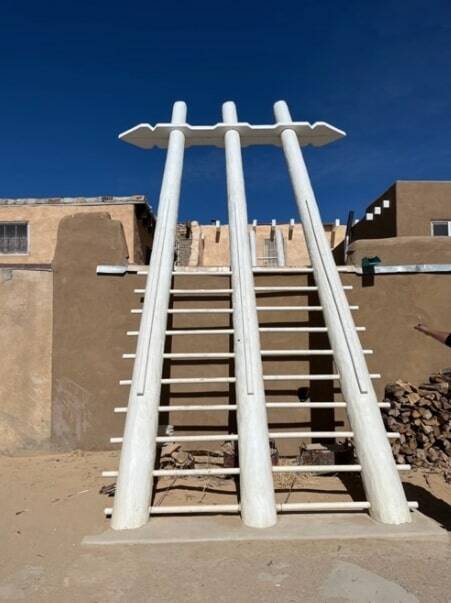What kind of traveler are you? Do you like to know what you’re doing, where you’re eating, and plan things down to the last detail? I prefer building a loose outline and filling in the rest as we go. Spontaneous travel without advanced hotel reservations can result in a “no room at the inn” situation, so for a recent Southwestern road trip, I booked refundable lodging. Keeping daytime itineraries loose with the option of making hotel changes allowed for minor adjustments and exploring places we learned about along the way. Some of these unexpected places turned into trip highlights.
On the way to Carlsbad Caverns, I’d overheard tourists raving about a pistachio farm in nearby Alamogordo, New Mexico. “The tour only costs $4, and it’s really fun,” they’d said. McGinn’s Pistachio Land is hard to miss – lots of roadside signs and the world’s largest pistachio — a 30-foot sculpture outside the shop — make it clear you’re in the right place. As an open-air tram moseyed through the pistachio fields, our tour guide recounted the history of McGinn’s vineyards and fruit fields. Yes! Pistachios are fruits, growing in heavy clusters that look like grapes.
It took twenty-five years for the trees at McGinn’s to reach maturity – a really long-term investment. Of the 12,000 trees, 700 males pollinate 19 females apiece. In a bumper year, they produce 400,000 pounds of nuts, peanuts compared to California, where 97% of U.S. pistachios are grown. As a longtime fan of pistachio ice cream, I really enjoyed the oversized scoop served from the window counter beside the gift shop. This bonus trip was fun, educational, and delicious.
While inspecting pretty note cards with hand-drawn cranes, I learned that southern New Mexico is on the flight path of a huge sandhill crane migration. Enroute to Albuquerque, we’d be sleeping in Socorro, only 18 miles from a sanctuary that hosts “Festival of the Cranes” each year in December. It was now February. Had we missed it? Calling the Bosque del Apache National Wildlife Refuge, I said, “I know this isn’t Disney Land and you can’t guarantee we’ll see birds. Is it too late to catch the migration?” The ranger said that chances were good at sunrise and sunset. Perfect! We’d be arriving close to sundown.
At first, it seemed we’d come up empty. Driving slowly through the sanctuary’s loop road, we pulled over to a viewing platform where two birders from Texas peered through their mounted lens. Hundreds of whistling, croaking cranes were landing in the shallow water, announcing, “Honey, I’m home!” It took my breath away.
The friendly Texans said, “When you drive from Albuquerque to Phoenix, stop at Painted Desert. It’s worth a detour, even if you’re short on time.” Okay! We planned our last full day to include a late evening stop at this section within Petrified Forest National Park.
But first, we enjoyed two glorious nights at Los Poblanos, an upscale inn, farm, and spa in Albuquerque. While there, we learned about the ancient Acoma Pueblo, high on a mesa further west in New Mexico.
Sometimes known as Sky City, the ancient settlement was founded in 1100 CE. Before then, its people lived nearby in the surrounding desert. When commanded by their gods to find the place where the word “Haa-ku” echoed back, the Acoma moved to the mesa.
Spanish colonizers made contact in 1541, forcing Acoma men to carry enormous trees from a distant forest and construct a massive church, which still stands, as do the pueblo’s three to four story umber-colored homes. This is the oldest continuously habituated community in North America, yet I’d never heard of it. Accessible only by tours led by tribal members, it was stirring to learn the history, the current status of the tribe, and its efforts to preserve their unique language.
Arriving late at Arizona’s Painted Desert, part of the Petrified Forest National Park, gusting wind practically blew me into the hard-to-find visitor’s center. We picked up brochures explaining the 225-million-year-old story behind this colorful landscape and raced to catch the views before the park’s gates closed. This prehistoric panorama of painted sand badlands and petrified wood is part of a natural travel corridor in use for over 10,000 years. Massive trunks, giant rocks, and layers of horizontal tiers colored purple, orange and red stretched out over 28 miles, as far as the eye could see. A perfect end to a glorious Southwestern trip.
Meanderings is a travel column by Mindy Stern, a Mercer Island resident whose essays can be found at www.mindysternauthor.com.


